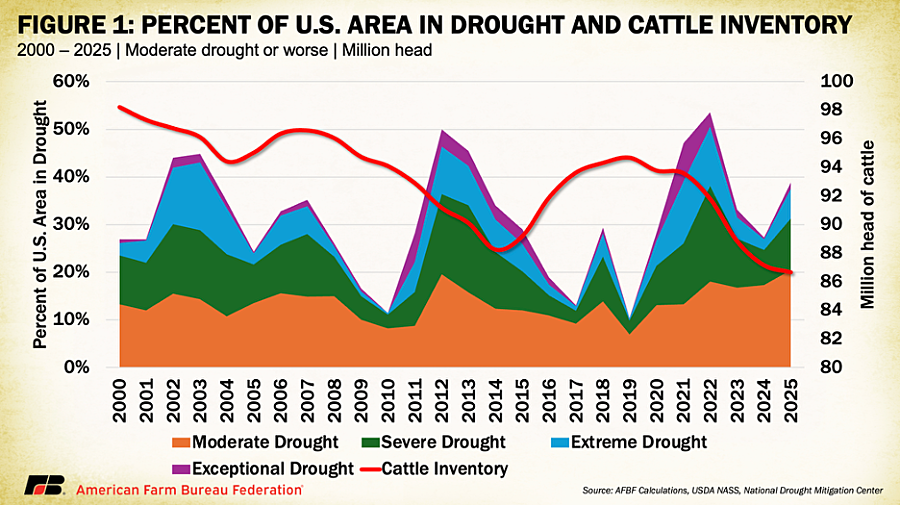Forage availability is the foundation of U.S. beef production and when drought conditions persist, the consequences cascade across the entire cattle sector. Insufficient rainfall depletes pasture quality on private and public lands, reduces hay yields and drives up feed costs, ultimately forcing ranchers to reduce stocking rates or liquidate herds. Data from the U.S. Drought Monitor and USDA’s National Agricultural Statistics Service show a clear connection: periods of extended drought correlate with periods of cattle inventory contraction. Between 2010 and 2017, when the percentage of U.S. area categorized in moderate drought or worse increased to 50% and then dropped to 13% national cattle inventories followed suit falling from 94 million head in 2010 to a low of 88 million in 2014, before partially recovering to 94.66 million by 2019 when the percent of U.S. area in drought dropped to 10.3%.
This inventory rebound was short-lived. Beginning in 2020, drought conditions reemerged and intensified. From 2021 through 2023, more than 40% of the country remained locked in moderate drought or worse. These conditions drove another sharp contraction in the national herd, with inventories falling by more than 8 million head between 2019 and 2025, from 94.7 million to 86.7 million, the lowest level since 1951.

This mismatch between high cattle prices and declining herd sizes reflects just how hard it has become for producers to respond to market signals. In a typical year, stronger prices would encourage herd rebuilding and investment in future production. But when the cost of feed, water and basic care climbs too high, especially during prolonged drought, many ranchers simply can’t afford to grow or even maintain their herds. That’s where programs like ELRP come in. By helping offset losses tied to drought and wildfire, ELRP provides critical support for ranchers facing both immediate financial strain and longer-term challenges to keeping their operations viable.
Click here to see more...